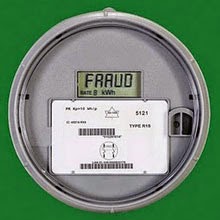This is what it’s like to have real utility regulation.
Duke Energy wanted to raise rates in Indiana in order to install $1.9 billion worth of “smart” meters and related paraphernalia. The Indiana Utility Regulatory Commission denied Duke Energy saying:
In the absence of any sufficient evidence to support Duke’s cost estimates, even for the first-year projects in the T&D Plan, we cannot find that the estimated costs are the best estimate of the costs of the eligible improvements as required by Ind. Code § 8-1-39-10. It is not enough for Duke, or even [engineering consultants] Black & Veatch, to simply assure us that the costs estimates are reasonable or best estimates. Duke must estimate its costs with a sufficient level of accuracy and supply evidence to allow the other parties and the Commission to conduct their own independent analysis of the estimated costs.”
There are some important takeaways here.
1) Appropriately, “smart” grid costs are being scrutinized before installation. That did not happen in Arizona.
2) Estimates must be based on “sufficient evidence.” That does not happen in Arizona either. For example, APS’s absurd meter reading “cost estimates” was just APS winging some numbers at the Arizona Corporation Commission and hoping some would stick. And they would have, too, had not citizens complained and appealed.
3) Unlike in Arizona, “other parties” in Indiana are considered important enough that they, in addition to the Regulatory Commission, are entitled to accurate evidence.
4) Rate increases are always necessary for “smart” grid installation. They have to be because, despite industry hype, the “smart” grid is not a cost savings but a huge, major expenditure.
In evaluating the Order issued by the Indiana Utility Regulatory Commission, “smart” grid analyst K.T. Weaver made the following observations:
From the Order by the Indiana Utility Regulatory Commission:
Duke looked at the proposed costs of AMI and compared those costs to quantifiable benefits, such as savings from meter reading. … The main quantifiable benefits arise from the elimination of monthly manual meter reads, enhanced theft detection that can be conducted without a truck roll, and the ability to conduct customer requested service disconnects and reconnects remotely.
 Analysis: Note that the above so-called “quantifiable benefits” are for the utility to eliminate the jobs of meter readers and reduce theft.
Analysis: Note that the above so-called “quantifiable benefits” are for the utility to eliminate the jobs of meter readers and reduce theft.
Near-term customer benefits include hourly interval usage data (next day) through a unique website portal, allowing customers to better understand their energy usage and save energy, and the convenience of remote turn off / turn on for customer moves.
Future, advanced-metering benefits could include time-differentiated peak pricing rates, pay as you go billing options, pick your own due date options, and customer usage alerts.
Analysis: What does the soft “benefit” of customers better understanding their energy usage have to do with the utility’s sole obligation to provide “electric utility service,” the plain meaning of which is described in the Indiana commission order as “the infrastructure necessary to transmit electricity from the generation facility to the customer”? … It doesn’t.
The future “benefit” of time-of-use pricing rates would also favor the utility by being able to charge dramatically higher rates during the day. Most consumers are not able to shift meaningful amounts of energy usage to the middle of the night; thus, this future “benefit” is not a benefit at all.
Sources:
ORDER OF THE COMMISSION – http://www.in.gov/oucc/files/44526_Order.pdf
Indiana Regulators Reject Smart Meters for Duke Energy
http://smartgridawareness.org/2015/05/11/indiana-customers-safe-from-smart-meters-for-now/
State regulators reject Duke Energy’s request for rate hike
http://fox59.com/2015/05/11/state-regulators-reject-duke-energys-request-for-rate-hike/


Be the first to comment on "“Smart” Meters Halted by Regulators in Indiana"